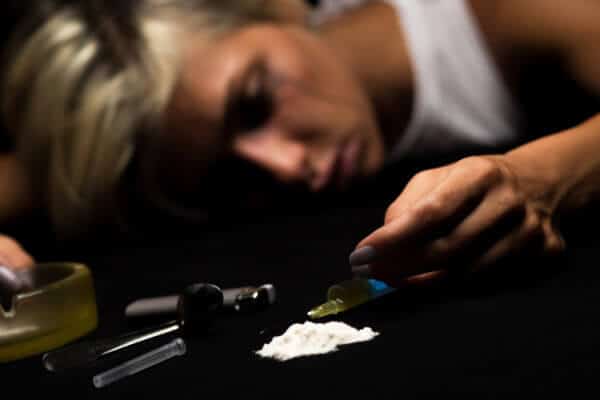Cocaine Overdose

Cocaine is a powerful central nervous system stimulant extracted from the leaves of the coca bush, a plant native to the Andes Mountains of South America. The drug produces intense euphoria and is quick and easy to use via injection, smoking or inhalation. Cocaine is highly addictive and extremely dangerous.
The National Institute on Drug Abuse reports that of all illicit drugs cocaine is responsible for the most drug-related emergency room visits in the United States. Cocaine is highly toxic and overdose can adversely affect nearly every organ in the body.
Statistics on Cocaine Overdose
Foundation for a Drug Free World reports that cocaine is the second most trafficked illegal drug in the world, following heroin. Statistics provided by the National Institute on Drug Abuse (NIDA) indicate that four percent of high school seniors have used cocaine in their lifetime, and 2.5 percent have used the drug within the past year. NIDA reports that approximately 5,500 people died from cocaine overdoses in 2014.
Risks Factors Associated with Cocaine Overdose
It’s impossible to predict when overdose symptoms will occur or how much cocaine will bring on an overdose. Cocaine overdoses, which are nearly always accidental, can occur after a single dose or after months or years of use.
According to University of Arizona College of Medicine, deaths have occurred after a very small dose of only a few hundred milligrams, while much larger doses aren’t always fatal. The drug’s unpredictability is attributed to individual sensitivity, overall health and widely varying metabolism among individuals, as well as the uncertainty regarding the drug’s contents and potential toxicity. Cocaine is often cut with substances such as baby powder, laxatives, boric acid or laundry detergent, or with dangerous adulterants like lidocaine or procaine.

A cocaine high is intense but relatively short-lived, lasting only about 30 minutes. Sometimes, people use extremely large amounts of cocaine while they’re still high from a previous use in an attempt to prevent a crash. Others, especially inexperienced users, simply lose track of how much cocaine they have used. Both scenarios greatly increase the risk of overdose as the body is unable to withstand the additional dosage.
A cocaine overdose may also result from a binge, which can continue for several days. During a binge, the body is deprived of food, hydration and sleep, all of which contribute to overdose.
Tolerance is often a factor for long-time users. As the body and brain become accustomed to the drug, more cocaine is needed to attain the same result.
Cocaine Overdose Signs and Symptoms
MedScape reports that cocaine overdose, including convulsions and death, can occur as soon as two to three minutes after use, or after as long as 30 minutes. Signs and symptoms of cocaine overdose may include:
- Frenetic behavior
- Talkativeness
- Chest pain
- Dizziness and fainting
- Severe headaches
- Breathing problems
- Seizures
- Muscle twitches, especially the face and fingers
- Loss of consciousness
- Insomnia
- Restlessness
- Chills
- Mood changes and irritability
- Paranoia, panic attacks, anxiety
- Delerium
- Nausea and vomiting
- Hallucinations
- Hyperthermia (dangerously high body temperature)
How Cocaine Overdose Affects the Body
Individuals who survive cocaine overdose may experience temporary damage that resolves relatively quickly with speedy treatment. However, damage to the heart, brain, lungs, liver, stomach and intestines may be permanent.
Heart – Cocaine causes constriction of the coronary arteries, which makes the heart beat faster or more erratically, according to Ohio State University NetWellness. As a result, the heart is deprived of oxygen and blood, which requires the heart to work much harder. Blood pressure can also spiral dangerously out of control, causing heart attacks and strokes, even in otherwise young, healthy individuals.
Cocaine overdose is especially dangerous for people who already have heart conditions, which may be undiagnosed. The risk of dying from overdose is much higher.
Lungs – Respiratory failure and lung collapse are frequently associated with cocaine overdose. Blood clots are a risk, especially for people who inject the drug. Long-term lung damage is more common for those who smoke cocaine.
Intestines, kidneys and other organs – Insufficient blood supply created by narrowing of the blood vessels can damage the stomach and may result in perforated ulcers. Acute rental failure and other organ damage is possible.
Eyes – Cocaine overdose presents a possibility of retinal spasms and the potential for vision loss.
Nose – In some cases, restriction of blood flow to the nasal area causes a perforation in the septum (the partition that separates the two nostrils). On its website, Osborn Head and Neck Institute notes that once there is a hole in the septum, it will never heal on its own. The website also reports that cocaine can severely impact the appearance of the nose, as well as the function. This is not uncommon for individuals who snort cocaine.

Brain – Cocaine use may cause increased levels of dopamine and other substances in the brain, says Cerebromente.org. The resulting constriction of the brain’s blood vessels can result in acute hemorrhages, aneurysm, stroke or sudden death.
According to an article published in the Journal of Neurology, Neurosurgery and Psychiatry, cocaine-induced brain damage can induce altered personality, increased irritability, violent behavior, memory impairment, coma and brain death.
Risk Factors that Contribute to Cocaine Overdose
Although overdose can occur regardless of the route of administration, the University of Arizona College of Medicine advises that the risk of fatal overdose is increased when the drug is injected. Smoking appears to be the next riskiest route of administration, followed by inhaling.
Risk of overdose is increased when other drugs are used at the same time (polydrug use). For example, mixing cocaine with heroin or alcohol is extremely dangerous because the two substances, a stimulant and a depressant, work against one another in the system. According to University of Arizona College of Medicine, individuals who inject cocaine and heroin are 2.6 times more likely to overdose.
What to do if a Person is Overdosing on Cocaine
If you’re with a person who is overdosing, call 911 immediately. Rapid medical care can make the difference between life and death, while waiting increases the risk of heart attack, stroke, and permanent damage to the body and brain, as outlined above. However, people who receive help in a timely manner often recover relatively quickly.
While waiting for arrival of emergency responders, loosen scarves and other garments that may restrict breathing. Remove sharp objects that can cause injury if the person experiences a seizure.
Most importantly, never leave an overdosing person alone; stay with the person until help arrives. Be aware that a person who is overdosing may experience extreme disorientation, paranoia, hallucinations, and aggressive or violent behavior.
Treating Cocaine Overdose
A person who has experienced symptoms of cocaine overdose may require CPR or other means of resuscitation. An individual who is highly agitated may require restraints to prevent damage to himself or others.
In some cases, a victim of overdose may experience hyperthermia, with body temperatures soaring as high as 120 degrees. If this occurs, emergency cooling may be needed to prevent permanent damage to the brain and central nervous system.
An overdose victim will require constant monitoring until she is stabilized. Withdrawal following overdose can be difficult and may involve intense cravings, fatigue, anxiety, paranoia, depression and insomnia.
Cocaine Addiction Treatment and Rehab

Addiction treatment should follow as soon as possible after an overdose victim is stabilized. Inpatient treatment ranges from standard or lower-cost treatment to luxury, higher-end facilities. Insurance often pays part or all of treatment.
Treatment will involve counseling or therapy for depression, anxiety or other underlying issues. An extensive aftercare plan will help reduce the chance of relapse.
Some individuals may benefit from outpatient treatment. Twelve Step groups are helpful for many people after primary treatment to maintain abstinence from cocaine.
If you or your loved one is currently experiencing a problem with cocaine addiction, don’t wait until it’s too late. Please Contact Beginnings Treatment Centers now to speak with one of our experienced intake advisors. There is no obligation or cost for the initial consultation, and quick action might save your life or that of your loved one.


